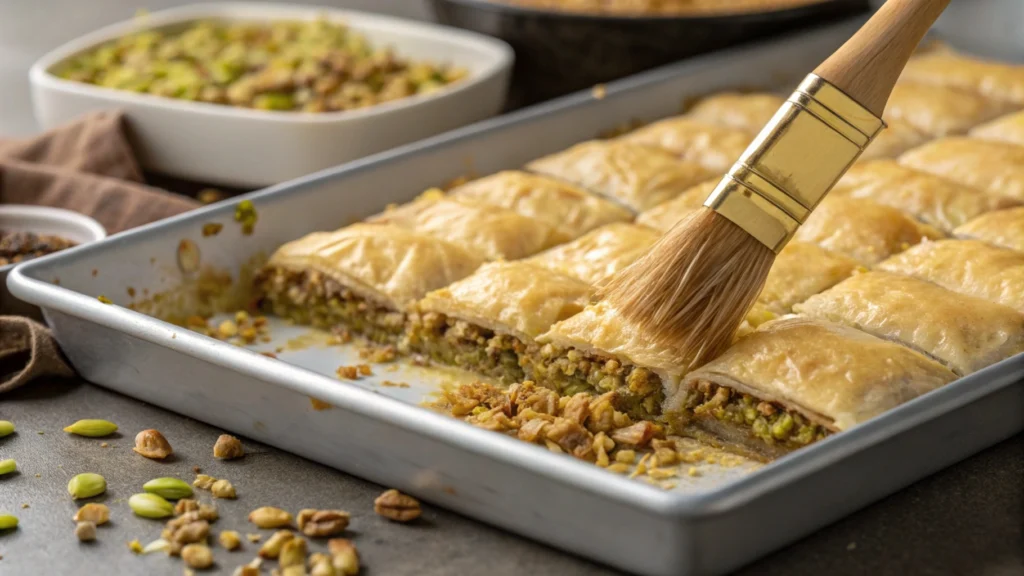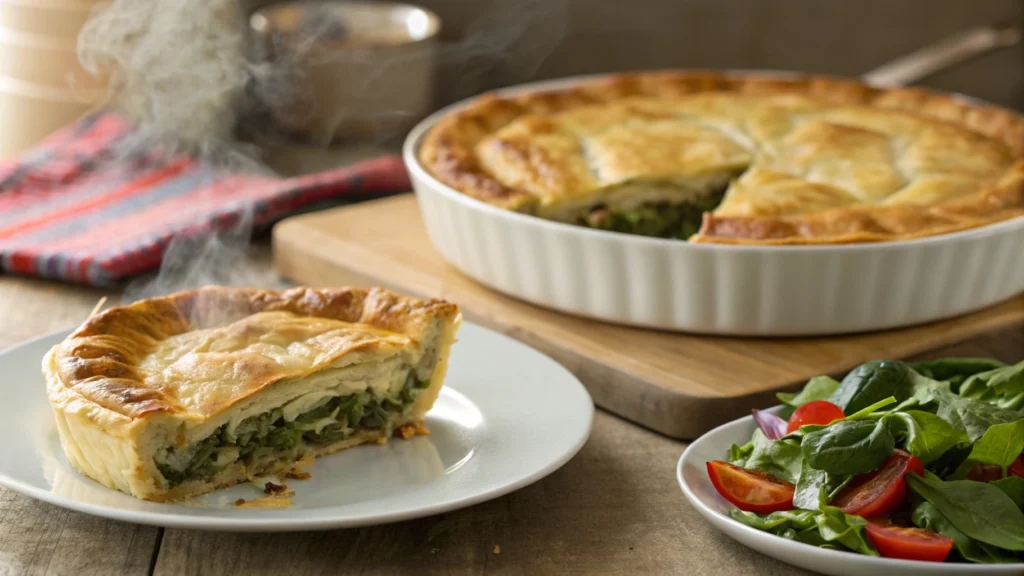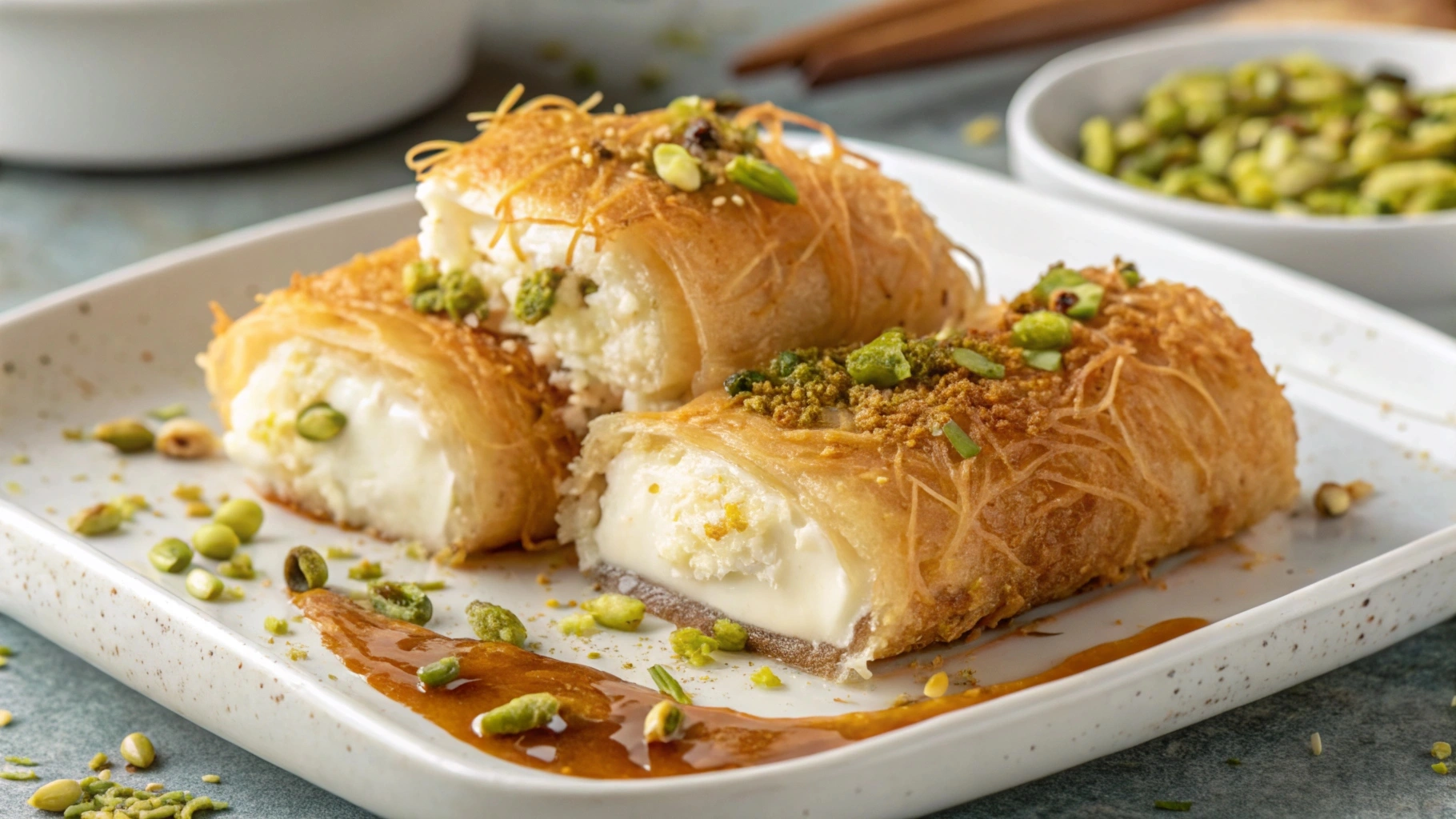Filo pastry, with its light, crisp, and paper-thin layers, is a cornerstone of many beloved dishes across Mediterranean, Middle Eastern, and Balkan cuisines. Also called phyllo dough, this versatile ingredient is the key to creating both sweet and savory masterpieces. Its unique texture and delicate nature make it a favorite among chefs and home cooks alike.
Popular Recipes Using Filo Pastry
Filo pastry is incredibly versatile and lends itself to a wide range of dishes. Whether you’re making a decadent dessert or a savory main course, its flaky texture and delicate crunch elevate every recipe. Let’s explore some of the most beloved dishes made with filo pastry.

Baklava: The Sweetest Delight
Baklava is perhaps the most iconic filo pastry dish. This dessert features layers of filo dough brushed with butter, interspersed with chopped nuts like walnuts, pistachios, or almonds. After baking, it’s drenched in a fragrant syrup made with honey, sugar, and rosewater or orange blossom water.
Steps to Prepare:
- Layer sheets of filo in a baking dish, brushing each with melted butter.
- Add a layer of finely chopped nuts mixed with sugar and spices like cinnamon.
- Repeat the layers until the dish is filled.
- Bake until golden, then pour syrup over the hot baklava to soak.
Spanakopita: A Greek Classic
Spanakopita is a savory Greek pie made with filo pastry, spinach, feta cheese, and herbs such as dill and parsley. It’s perfect as an appetizer, side dish, or even a light meal.
Steps to Prepare:
- Sauté spinach and mix it with crumbled feta, eggs, and herbs.
- Layer filo sheets in a pan, brushing each layer with butter or olive oil.
- Add the spinach mixture, then top with more layers of filo.
- Bake until the pastry is golden and crisp.
Börek: A Turkish Favorite
Börek comes in many shapes and flavors, from meat-filled rolls to cheese-stuffed pies. It’s a staple in Turkish cuisine and is often enjoyed as a breakfast dish or snack.
Steps to Prepare:
- Roll out filo dough and fill it with a savory mixture, such as spiced minced meat or feta and parsley.
- Fold or roll the dough into desired shapes (spirals, triangles, or cigars).
- Brush with egg wash and sprinkle with sesame seeds before baking.
Sweet Dishes
Filo pastry is a baker’s dream for creating desserts with layers of sweetness and texture. Here are a few crowd-pleasers:

Galaktoboureko
A Greek dessert made by layering filo sheets with a creamy semolina custard. It’s baked and then soaked in a citrusy syrup.
Apple Filo Pockets
These are a lighter take on apple pie, with a spiced apple filling wrapped in crispy filo sheets.
Nut and Honey Rolls
Similar to baklava but shaped as individual rolls, these are perfect for single servings and add a modern twist to a traditional dessert.
Savory Dishes
Filo pastry isn’t just for sweets; it shines in savory dishes as well:
Cheese Triangles
Filo pastry stuffed with a mixture of cheeses like ricotta and feta, then folded into neat triangles.
Vegetable Strudel
Packed with roasted vegetables and seasoned with herbs, this dish is ideal for vegetarians.
Filo-Wrapped Salmon
For a sophisticated main course, wrap salmon fillets in filo with a layer of spinach or cream cheese before baking.
Filo Pastry in Global Cuisines
Filo pastry’s adaptability has made it a staple in kitchens worldwide. Each region brings its own twist to this delicate dough, enriching its culinary identity.
Turkish Cuisine
In Turkey, börek and baklava are iconic filo-based dishes. Börek can be filled with a variety of ingredients, including ground meat, cheese, or spinach. Turkish baklava often uses pistachios and has a lighter syrup compared to other versions.
Greek Cuisine
Filo pastry is integral to Greek cooking, featuring prominently in spanakopita, tiropita (cheese pie), and the decadent galaktoboureko. Greeks often use olive oil instead of butter for a distinctive Mediterranean flavor.
Middle Eastern Cuisine
In Middle Eastern desserts like kunafa, shredded or whole filo is layered with sweet cheese and soaked in sugar syrup. Other favorites include warbat, a filo dessert filled with custard or nuts.
Balkan Cuisine
The Balkans are home to savory pies like zeljanica (spinach pie) and gibanica, a layered cheese pie. These dishes highlight filo pastry’s role in creating hearty, filling meals.
Tips for Handling Filo Pastry
Working with filo pastry can be tricky, but mastering a few techniques will ensure your dishes turn out perfect every time.
Thawing and Preparation
- Always thaw frozen filo pastry in the fridge overnight. Rapid thawing can cause the sheets to stick together.
- Keep the sheets covered with a damp cloth while working to prevent them from drying out.
Layering and Brushing
- Use melted butter, oil, or a mixture to brush between layers. This keeps the pastry moist and ensures crisp, golden results.
- Work quickly but gently to avoid tearing the delicate sheets.
Storing Leftovers
- Leftover filo sheets can be wrapped tightly in plastic wrap and refrigerated for up to a week.
- If you’ve already used it in a dish, store the baked item in an airtight container to maintain freshness.
Common Mistakes and How to Avoid Them
Drying Out
Filo pastry dries out quickly if left uncovered. Always keep unused sheets covered with a slightly damp towel to retain moisture.
Tearing
Tearing can happen if the sheets are too dry or handled roughly. If a sheet tears, don’t worry simply patch it with another piece and continue layering.
Uneven Baking
Ensure even coverage of butter or oil when brushing layers. This prevents dry spots and ensures consistent browning.
Overhandling
Filo pastry is delicate, so handle it minimally. Letting the pastry rest for a few minutes before working can make it more pliable.
Filo Pastry Alternatives
If filo pastry isn’t available or suitable for your recipe, here are some substitutes:
Puff Pastry
A thicker option with a buttery flavor. While not as crisp, puff pastry works well in savory pies and tarts.
Wonton Wrappers
Thin and easy to use, wonton wrappers are a good substitute for small appetizers or dumplings.
Rice Paper
For gluten-free alternatives, rice paper can mimic the lightness of filo in certain recipes, though it lacks the crispiness.
The Art of Layering Filo Pastry
Layering filo pastry is both a skill and an art. When done correctly, it creates dishes with perfect crispness and texture. Here’s how to achieve the best results:
Buttering Each Layer
Brushing melted butter or oil between the layers is crucial for achieving the pastry’s signature flakiness. Be generous but even in your application to avoid soggy or unevenly baked areas.
Folding Techniques
- Rolling: Perfect for dishes like baklava or börek, where you want a compact, uniform shape.
- Layering: Ideal for pies like spanakopita, where filo is layered across the dish and folded over the filling.
- Folding: Common in appetizers like filo triangles, where the sheets are folded into smaller, manageable parcels.
Presentation
Use decorative patterns like diagonal scoring or spiral rolls to elevate the appearance of your dish. Adding a sprinkle of sesame seeds or chopped nuts can also enhance the visual appeal.
Health Considerations
Filo pastry is often seen as a lighter alternative to puff pastry because it contains little to no fat. However, this can change depending on how you prepare your dish.
Nutritional Information
- Calories: Filo pastry is relatively low in calories per sheet, making it a diet-friendly option.
- Fat Content: Unlike puff pastry, filo has no built-in fat; any fat comes from the butter or oil you add during preparation.
- Carbs: Like most doughs, filo is carb-heavy, so it’s worth keeping portions in mind.
Lower-Fat Alternatives
If you want a healthier dish:
- Use a light spray of oil instead of butter.
- Opt for fillings like vegetables or lean proteins instead of heavy creams or cheeses.
Gluten-Free Options
For those with dietary restrictions, gluten-free filo pastry is available in specialty stores. Alternatively, substitutes like rice paper can be used.
Filo Pastry for Beginners
Making homemade filo pastry might seem intimidating, but with a little patience and practice, it’s achievable even for novices.
Step-by-Step Recipe for Homemade Filo Dough
Ingredients:
- 2 cups all-purpose flour
- ½ teaspoon salt
- ¾ cup water
- 2 tablespoons olive oil
- 1 teaspoon white vinegar
Instructions:
- Mix flour and salt in a bowl.
- Gradually add water, oil, and vinegar, mixing until a soft dough forms.
- Knead the dough on a floured surface for 10 minutes until smooth and elastic.
- Divide into small balls and let rest for 30 minutes under a damp towel.
- Roll each ball into a thin, translucent sheet using a rolling pin or dowel.
Tip for Beginners: Use cornstarch instead of flour for rolling out the dough to prevent sticking without over-drying the pastry.
Advanced Filo Techniques
Once you’ve mastered the basics, you can experiment with advanced techniques to elevate your filo creations.
Decorative Patterns
- Ruffled Edges: Scrunch the edges of the filo for an elegant look in pies.
- Braided Layers: Interlace strips of filo dough for a show-stopping presentation.
Creative Recipes
- Filo Cups: Mold filo sheets into muffin tins, bake until crisp, and fill with savory or sweet fillings.
- Layered Desserts: Use filo sheets to create a mille-feuille-inspired dessert with cream and fruit.

